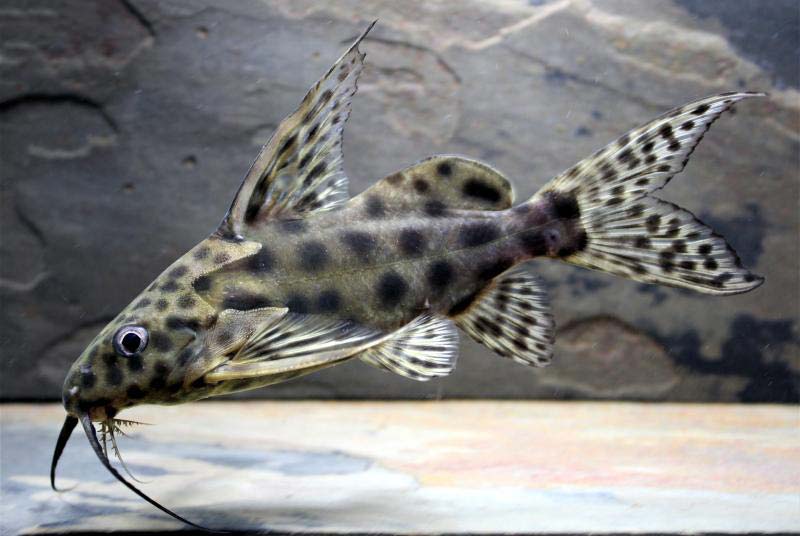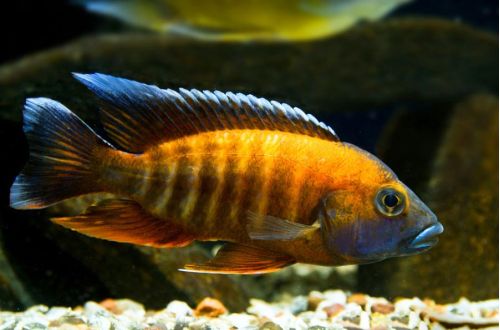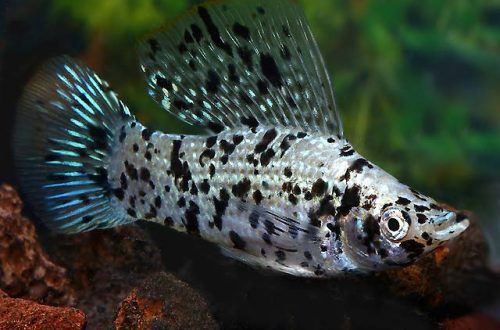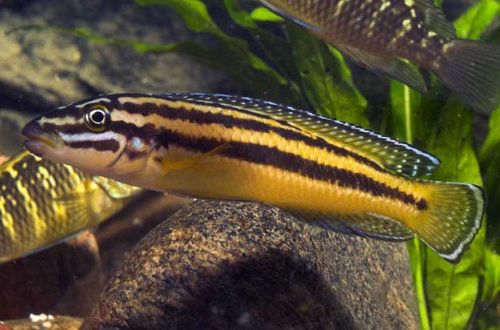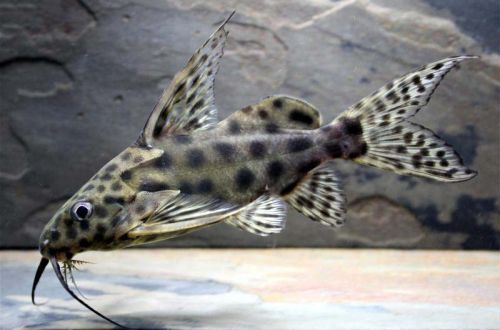
Synodontis velifer
Synodontis velifer or Synodontis sailospin, scientific name Synodontis velifer, belongs to the family Mochokidae (Fringed catfish). The catfish is native to West Africa. Inhabits river systems flowing mainly through the territory of Burkina Faso, Ivory Coast, Ghana and Togo.

Description
Adult individuals reach a length of up to 23 cm. The fish have reliable head protection. Bone plates form a kind of helmet and are dotted with numerous small spines. Large dorsal and pectoral fins have thickened first rays, which have turned into sharp spikes. The rest of the fins are smaller. The tail is massive forked.
The body color is gray with a pattern of round dark spots.
There are several pairs of sensitive antennae near the mouth, which help the fish navigate in space near the silty bottom in muddy water, and are also designed to search for food.
Behavior and Compatibility
Peaceful calm fish. It gets along well with relatives and other non-aggressive species. It leads a secretive lifestyle and is active at night. During the day it will hide in shelters.
Brief information:
- The volume of the aquarium – from 200 liters.
- Temperature – 21-25°C
- Value pH — 6.0–7.0
- Water hardness – from soft to medium hardness
- Substrate type – sandy, soft
- Lighting – subdued or moderate
- Brackish water – no
- Water movement – light or moderate
- The size of the fish is up to 23 cm.
- Nutrition – any drowning person with a high protein content
- Temperament – peaceful
- Keeping alone or in a group in the presence of shelters
Maintenance and care, arrangement of the aquarium
The optimal size of the aquarium for one or two catfish starts from 200 liters. In the design, it is imperative to provide for several shelters, for example, caves, where Synodontis velifer will hide in the daytime. Shelters can be formed from a heap of stones, forming grottoes and gorges, snags and thickets of plants, placing the latter in front of the entrance to the shelter.
Any lighting if there are shelters and other types of fish are kept. The degree of illumination should be largely determined by the needs of plants.
This species is native to wetlands. For this reason, aquarium water should have low pH and GH values.
A good addition would be the presence of dissolved tannins resulting from the decomposition of natural leaves, snags, tree bark.
Aquarium maintenance is standard and consists of several mandatory procedures: weekly replacement of part of the water with fresh water, removal of organic waste (food residue, excrement, etc.) and equipment maintenance.
Food
The basis of the diet should be feed with a high protein content, while the products should be sinking. A good choice would be dry, live or frozen bloodworms, as well as earthworms, tubifex, various dry foods in the form of flakes and granules.
Sources: wikipedia.org, planetcatfish.com, fishbase.de



